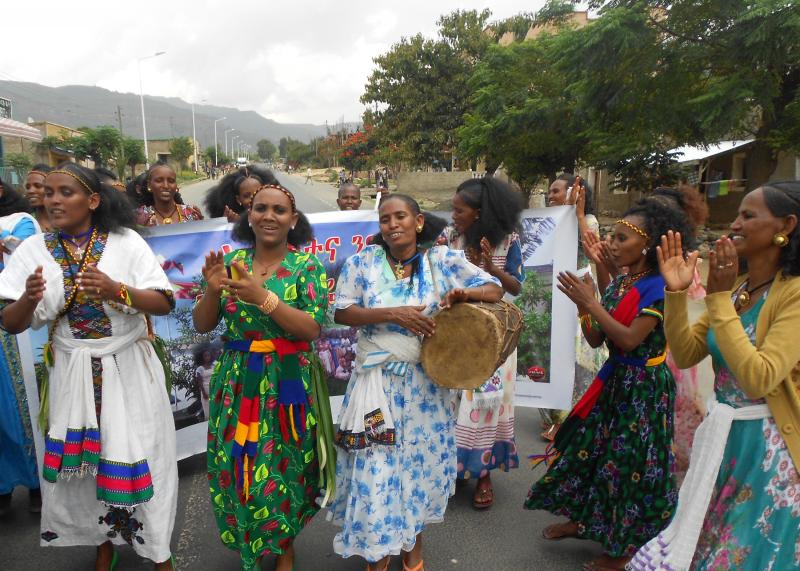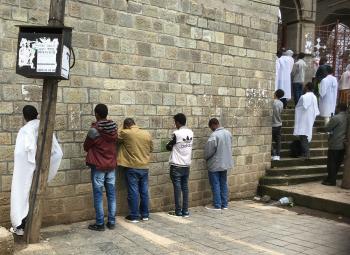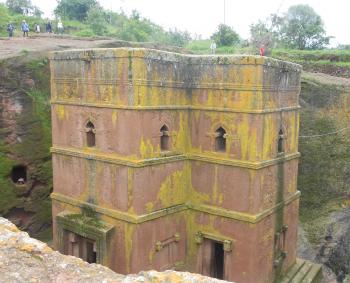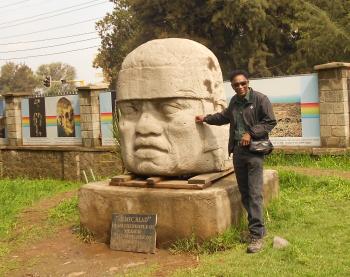Ethiopia – a return visit to a favorite destination
This article appears on page 32 of the March 2018 issue.
In August 2015, I organized a trip to Ethiopia that took me across the width and breadth of that beautiful, ancient land. During that trip, I visited many of its world- renowned sites and a number of historical cities and saw some of its natural wonders, such as the towering Simien Mountains and the Blue Nile Gorge.
In early September 2017 I returned to Ethiopia, a country, along with its people, that I had become particularly fond of. I wanted to retrace the steps of my earlier journey, and I was curious to see if the country still retained the allure and charm that had caused me to become so unabashedly enamored of it in 2015.
Then and now
The two trips had some similarities and some differences. On both I flew round trip on Ethiopian Airlines, the country’s national airline and one of Africa’s oldest carriers. I arrived in the country almost on the exact same date.
On this latest trip, I resided at a different hotel in a different part of Addis Ababa following my arrival, but I was also far more familiar with Ethiopia and its people and cultures and was more at ease in getting around the country on my own without a guide.
However, what I found this time was a country that had been rocked by man-made tragedies and political polarization. Nevertheless, I explored, once again, a country with the same picturesque scenery, majestic, soaring mountains, stunning landscapes and, in the Highlands, a temperate, invigorating climate.
And then there are the Ethiopians, themselves, an attractive and talented people who smile readily and laugh easily. I admire their vitality and zest for life, and their children are among the most independent and resourceful children I have ever observed.
Accommodation
My arrival at the Queen of Sheba Hotel (Haile Gebreselasie St.) was distinctly unlike my arrival in 2015 at the Jupiter International Hotel (Tito St.), when I arrived in a car with only my guide. This time around, I was crammed into a van with other passengers as we were driven through the rain to the hotel.
Once I completed the necessary paperwork, I made my way to my room. I was very tired after having flown from South Africa earlier that evening, and I just wanted to get some much-needed rest.
I slept soundly and arose the next morning energetic and very happy to be back in Ethiopia.
The hostess at breakfast was very friendly and helpful, exclaiming, “I am so glad that you liked our country and came back again!” when I told her that this was my second trip.
Nevertheless, there was one thing I kept thinking about while eating breakfast, and it was that the Queen of Sheba Hotel simply was not in the same league as the Jupiter International Hotel.
It was adequate, for the most part, but it certainly had its problems in terms of room conditions. What it did have, though, was a great locale (in an area closer to the airport) and a friendly staff.
The Jupiter International Hotel is located in a slightly more affluent area, but, of course, the cost of accommodations there is higher ($123 per night as compared to $64 per night at the Queen of Sheba).
A look around
After finishing my meal, it was time for me to leave the hotel and go exploring. As I started my exploratory walk, I had no particular place in mind.
Walking down the street from the hotel, I ran into a small, mixed-gender group of young Ethiopians. For some unknown reason, they wanted to know what region of Ethiopia I came from. I told them that I was not from Ethiopia, which caused them to become somewhat agitated.
One of them asked me, point blank, “Why are you denying your Ethiopian heritage? It is nothing to be ashamed of.”
Even producing my American passport didn’t stop the questions, but eventually we were able to get beyond my ethnicity and they peppered me with questions, instead, about California, my home state.
As I prepared to depart from the group, I became aware that they were a little leery about my taking photos, especially since there were females in the group, something I had not encountered during my trip in 2015. I respected their privacy.
I then made my way to a church, which was overflowing with worshipers, some spilling out onto the sidewalk. But what caught my attention most was a group of young men who were leaning against the church wall praying. They reminded me of photos I’d seen of men praying at the Wailing Wall in Jerusalem.
A few minutes later, a group of young men came marching down the street in a religious procession. The group was led by an older lad with a whip in his hand, and every once in a while he would cut the air with the cracking of his whip.
Special sites
As time marched on during this visit, I encountered places and scenes I had not seen before, but there were still those earlier fascinating places, natural wonders, the picturesque countryside, monasteries, temples, churches and ancient ruins that still had the power to elicit awe and amazement.
In Lalibela, I marveled at the complex of 11 gigantic churches hewn out of solid rock that have the ability to astonish no matter how many times you see them.
Another site worth visiting, the ancient ruins of Axum, features soaring obelisks, towering steles and Ethiopia’s oldest Christian church, Saint Mary of Zion, amidst all of its historical pageantry and beautiful artworks.
Located across from Saint Mary of Zion is a gold-domed building where, according to legend, the biblical Ark of the Covenant is said to reside in a special temple constructed solely for the purpose of housing the Ark and its Ten Commandments.
Scattered throughout the country are historic monasteries, but the most interesting ones can be found on the islands along the shore of the serene and beautiful Lake Tana.
Gondar, a city founded during the Middle Ages and formerly the capital of the Ethiopian Empire, also has a very interesting history. There are many historical sites to visit there, such as its castle complex and the famous Fasilides Bath. There are also many churches scattered throughout the city with beautiful artworks and trappings.
Summing up
For those individuals planning on visiting Ethiopia, there are a few things to consider. The months of April and May are the best times to visit the northern Highlands. Ethiopia’s rainy season is from June to September.
Travelers visiting Ethiopia can expect moderate climate in the northern Highlands due to its elevation, while the climate in the southern region tends to be warmer and its desert regions can be uncomfortably hot.
During the evening, the weather tends to be chilly, on some occasions necessitating the use of a sweater or light jacket. Overall, Ethiopia’s climate tends to be sunny and temperate for most of the year.
The longer I was in Ethiopia, the more I was able to recapture the adventurous spirit and enjoyment of my 2015 trip. Yes, the country had changed politically over the previous two years, but, at the same time, its scenery was still stunning and its man-made structures were just as awe-inspiring. In addition, the Ethiopian people I met on this trip were warm, funny, curious, enterprising, friendly, religious people who were in love with life.
Those elements are what make this fabled and legendary land one of my favorite countries in the world!




